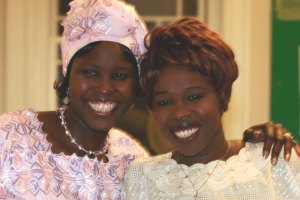Michelle Obama e a pigmentocracia da “pele marrom” na comunidade afro-americana.
Desde do tempo que os afro-americanos perceberam que Barack Obama realmente tinha uma chance legítima de se tornar o primeiro presidente negro, tenho ouvi e li um comentário particular das mulheres afro-americanas que, em minha opinião, é um exagero. Nos fóruns on-line e em conversas, eu sempre ouço mulheres afro-americanas dizem: “Barack tem uma mulher negra verdadeira”.
O que gente quer dizer é que Michelle Obama não é uma mulher de pele clara. Ela não tem a aparência das cantores negro-mestiças como Alicia Keys e Mariah Carey. Mas também é verdade que expressões como clara e escuro são relativos. Em países como o Sudão, Michelle Obama poderia ser considerada uma mulher de pele clara.
“Estou tão feliz que Barack escolheu uma mulher negra verdadeira”, mulheres afro-americanas sempre dizem.
Mas ela é uma mulher negra verdadeira? Quero dizer, ela é claramente uma mulher de ascendência africana, mas há milhões de mulheres por todo do mundo que têm pele mais escura do que Michelle. O meu ponto de escrever isso é que sempre existiu uma pigmentocracia na comunidade afro-americana. No início do século 20, existiam muitos igrejas, clubes sociais e escolas dos negros onde a aceitação de um afro-americano dependeu do tez do pele do candidato. O teste foi chamado de “teste de saco de papel marrom”, uma pessoa foi aceitado ou rejeitado nestes locais dependendo da se a cor de sua pele era mais clara ou mais escura do que um saco de papel marrom. Se a cor da pele do membro potencial foi mais clara do que o saco, a pessoa foi aceitado. Se a sua pele era mais escura do que o saco, eles foram rejeitados.
Embora padrões beleza na comunidade negra deram certas vantagens aos afro-americanos de pele clara, o padrão para “negrura aceitável” na comunidade negra se tornou a pele meio-marrom. Como Laila Haidarali explicou, “a pelemarrom ocupava o espaço meio de ser visívelmente “negra”, mas não escura demais para perturbar valores estéticos dominantes.” Segundo Haidarali, na era pós-Guerra Mundial II, revistas negras como Ebony tentei lutar contra o estereótipo das mulheres negras como sendo sem atractiva, de pele escura, “mammies” (Mães Pretas) e empregadas por outorgar sobre a mulher de pele marrom atributos tradicionalmente negados às mulheres negras: beleza, compostura e sucesso.
Na década de 1940, educadora Mary McLeod Bethune foi dada a posição mais alta de qualquer afro-americana na administração do Presidente Franklin Roosevelt, e foi considerado um grande líder afro-americana, mas muitos afro-americanos sentiram que ela estava escuro e feio demais (cabelo pixaim e características facias negróides) a representar negros em um nível nacional e internacional. O padrão de “negrura aceitável” na mulher de pele marrom e o debate de pele clara versus pele escura ainda é muito forte na comunidade negra hoje. Eu diria que não é uma questão de pele clara ou de pele escura, mas sim uma questão de ser “
escuro demais”, ou “preto (BLACK)”, como afro-americanos descrevem afro-americanos de pele muito escura.
Então, minha pergunta é, se a padrão de “negrura aceitável” é a pessoa de pele clara a pele marrom médio e características facias que não são “negróide demais”, como os afro-americanos ia reagir se a tez de pele e características facias de a mulher de Barack Obama foi mais perto dos cidadãos do Sudão? Muito raramente é um modelo com a cor da pele e características facias do modelo sudanesa Alek Wek aparece nas revista negras. Livros, revistas e propagandas de cabelo direcionadas à comunidade afro-americana consistentemente apresentam mulheres negras de pele clara e pele marrom médio e características faciais “menos negróide”. A cor da pele de muitas pessoas no Sudão se aproxima da cor preta do que qualquer modelo afro-americana. A tez de pele média de Michelle Obama simplesmente apoia a estética dominante de “negrura aceitável”, ou melhor ainda, “morenidade”. Então, pergunto, o que é uma mulher negra verdadeira?
Dedico este postagem ao povo de Darfur, no Sudão.












July 10, 2009 at 1:47 pm |
você tem uma historia muito importante para relatar mas,tens que melhorar a grafia ok?